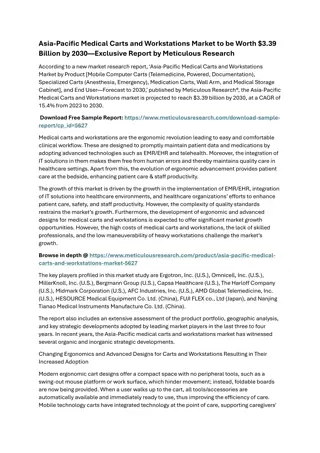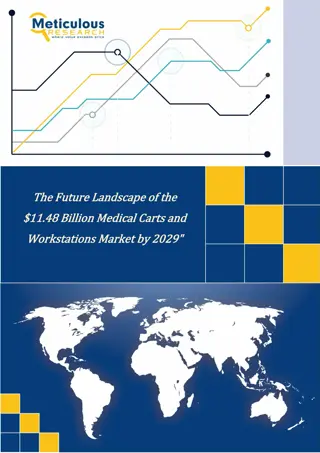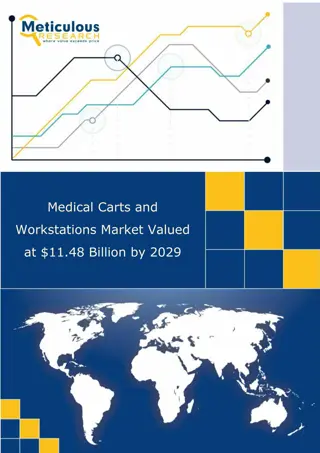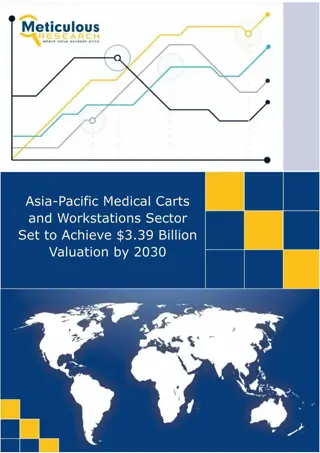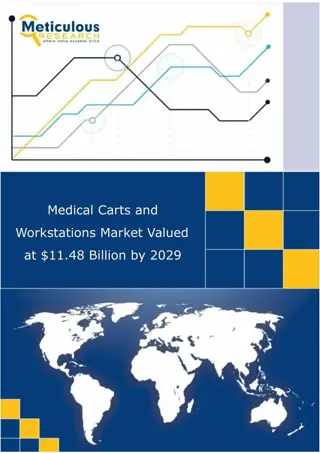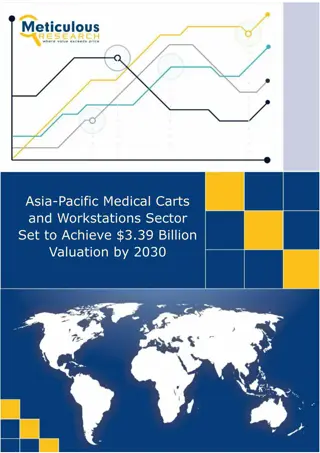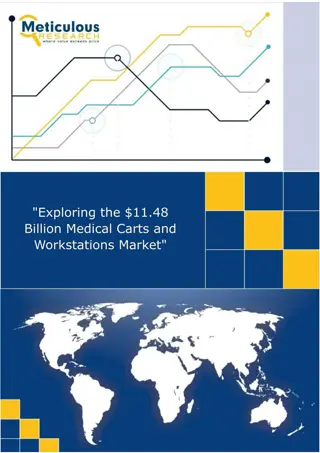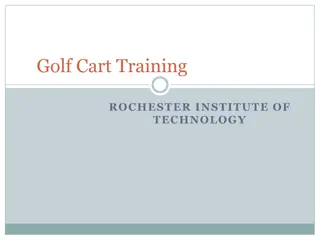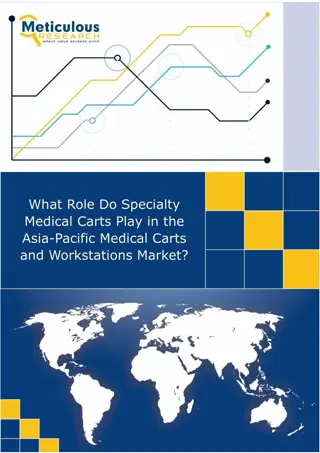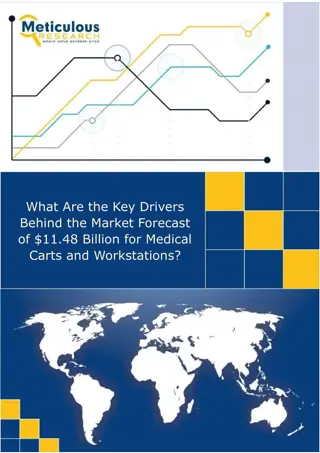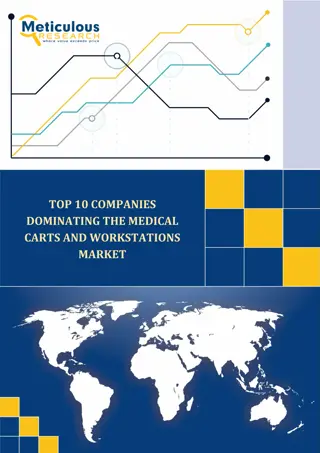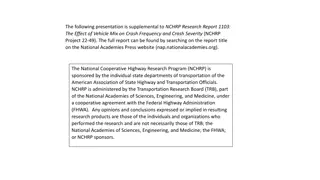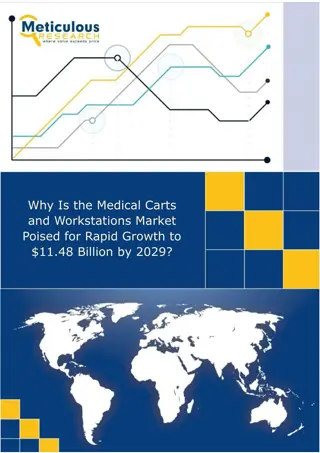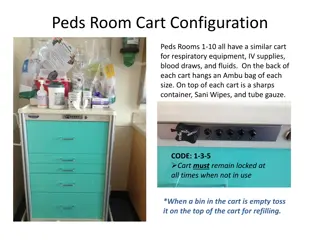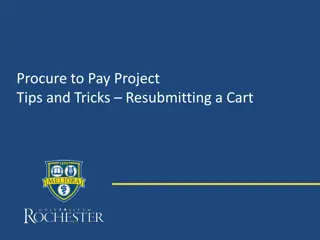Understanding Crash Carts and Their Importance in Medical Emergencies
Crash carts, also known as code carts, are vital in medical settings for providing emergency medical equipment and drugs to resuscitate patients experiencing cardiac arrest. These carts play a crucial role in supporting life-saving protocols and improving efficiency in emergencies, ultimately increasing the chances of saving lives. Developed by Joel J. Nobel, M.D., crash carts carry instruments for CPR, medical supplies, and essential drugs tailored to treat life-threatening conditions. Components include monitor/defibrillators, ACLS drugs, and tools for common medical problems and rapid sequence intubation.
Download Presentation

Please find below an Image/Link to download the presentation.
The content on the website is provided AS IS for your information and personal use only. It may not be sold, licensed, or shared on other websites without obtaining consent from the author. Download presentation by click this link. If you encounter any issues during the download, it is possible that the publisher has removed the file from their server.
E N D
Presentation Transcript
StudyMafia.Org Crash Cart Submitted To: Submitted By: Studymafia.org Studymafia.org
Table Contents Definition About Crash Cart History in the United States Crash Cart In Computing Conclusion 2
Definition A cart stocked with emergency medical equipment, supplies, and drugs for use by medical personnel especially during efforts to resuscitate a patient experiencing cardiac arrest 3
About Crash Cart A crash cart or code cart (crash trolley in UK medical jargon) or "MAX cart" is a set of trays/drawers/shelves on wheels used in hospitals for transportation and dispensing of emergency medication/equipment at site of medical/surgical emergency for life support protocols (ACLS/ALS) to potentially save someone's life. 4
About Crash Cart The cart carries instruments for cardiopulmonary resuscitation and other medical supplies while also functioning as a support litter for the patient. The crash cart was originally designed and patented by ECRI Institute founder, Joel J. Nobel, M.D., while a surgical resident at Philadelphia's Pennsylvania Hospital in 1965 5
About Crash Cart MAX helped enhance hospital's efficiency in emergencies by enabling doctors and nurses to save time, thereby increasing the chances of saving a life. The contents and organization of a crash cart vary from hospital to hospital, country to country, and specialty to specialty, but typically contain the tools and drugs needed to treat a person in or near cardiac arrest or another life-threatening condition. 6
Components of Crash Cart Monitor/defibrillators, suction devices, and bag valve masks (BVMs) of different sizes Advanced cardiac life support (ACLS) drugs such as epinephrine, atropine, amiodarone, lidocaine, sodium bicarbonate, dopamine, and vasopressin. Drugs for peripheral and central venous access 7
Components of Crash Cart First line drugs for treatment of common problems such as: adenosine, dextrose, epinephrine for IM use, naloxone, nitroglycerin, and others Drugs for rapid sequence intubation: succinylcholine or another paralytic, and a sedative such as etomidate, propofol or midazolam; endotracheal tubes and other intubating equipment 8
History in the United States The first cardiac crash cart was created in 1962 at Bethany Medical Center in Kansas City, Kansas, home to the first Cardiac Care Unit in the country. The first crash cart was designed by a nurse and fabricated by the father of one of the doctors. It contained an Ambu bag, defibrillator paddles, a bed board and endotracheal tubes. 9
In computing In the computer industry, the term crash cart is used, by analogy to its original meaning in medicine, to mean a cart that can be connected to a server that is malfunctioning so badly that remote access to it is impossible, the intention being to "resuscitate" the server to the point where remote administration works again. 10
In computing Crash carts most commonly include a keyboard, mouse, and monitor, because most servers in a modern high-density environment do not have user input/output devices. Crash carts are a method of last resort in data centers which employ various forms of out- of-band management. 11
In computing In those cases it is used for equipment which does not support the requisite out-of-band infrastructure (OOBI) features or in cases where the OOBI devices (concentrators, switches, terminal servers, etc.) or services themselves have failed. The term "crash cart" can also refer to a bootable removable medium containing an operating system and any relevant software used to recover computer equipment (such as a server or PC) from a state of failure. 12
In computing This is done when such recovery is not possible using the computer's existing operating system and software. Crash carts in this sense are historically tape cartridges ("carts") or more recently, external or removable hard drives. 13
Conclusion Crash cart is a hospital trolley which come in a variety of configurations like with wheels, numerous drawers, waist etc. The medical crash cart is an essential hospital furniture in the medical field. 15
References Google.com Wikipedia.org Studymafia.org Slidespanda.com
Thanks To StudyMafia.org



